I have always been a big believer that cask and sparkling wine have more in common than one may think and I am intrigued by the fact they are often interacted with so differently. Not everyone introduced to cask is innately blessed with a sound knowledge of beer. Some, like myself, have come into cask through their love and appreciation of wine and it is my knowledge of wine that has helped me slowly piece together the intricacies of cask beer.
So let’s take a look at how wine may help us to understand and appreciate cask better, what the two drinks have in common, how their methods of carbonation and fermentation have developed alongside each other and why they tend to be perceived differently in social settings.
First up, carbonation.
Illustrations by David Bailey

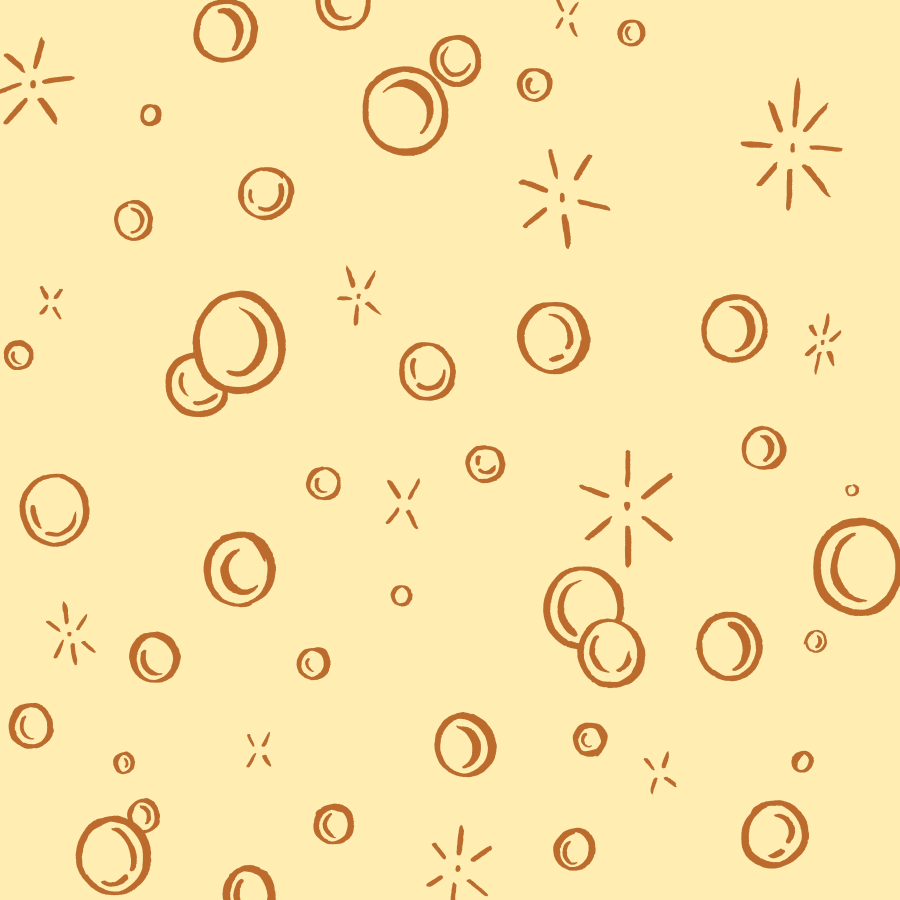
Beer, wine and cider all rely on fermentation, and when harnessed correctly this fermentation results in fizzy, sparkling, alcoholic drinks.
Fermentation requires active yeast and enough food for that yeast, which often comes in the form of sugars. This is the same for all of our fermented drinks. In cask beer, the sugar comes in the form of wort, the sweet liquid extracted during the mashing process. In wine production, sugar naturally occurs in ripe grapes, which are harvested and pressed each year to produce a sweet liquid ready to ferment.
During fermentation the yeast will feed on these sugary liquids and produce alcohol and carbon dioxide. With wine and cider it is normal for a drink to undergo fermentation and become flat or still, free of carbonation. But bubbles are crucial to the formation and flavour of beer and sparkling wine, so these drinks must be made and stored under pressure in order to keep and ultimately dissolve the carbon dioxide into the liquid, creating that frothy, fizzy sensation we all know and love.
So let’s take a look at how that carbonation is kept and maintained in cask beer and sparkling wine, respectively.
Methods of carbonation work to distinguish one drink from another, take cask and keg for example, or live beer and bright beer.
Live beer requires a continuing, secondary fermentation, often referred to as cask conditioning. A living, breathing sip of British heritage, cask retains some of its yeast that continues to ferment the beer even when it is in the cellar. This means casks require careful handling and experienced understanding by those who serve them. Whilst kegs get served with the addition of extra carbon dioxide, cask relies on a build up of character and a retained quantity of carbon dioxide created during cellar conditioning. This conditioning and the assistance of a hand pump (and sometimes a sparkler) when dispensing beer, contributes towards cask’s final feel and flavour.
Conditioning will vary from cask to cask but most live beers will go through a process of “dropping bright” when finings are added to the beer they will bind to the sediment formed during the secondary fermentation, transporting it to the bottom of the cask, leaving the majority of the beer free from unnecessary cloudiness and sediment.
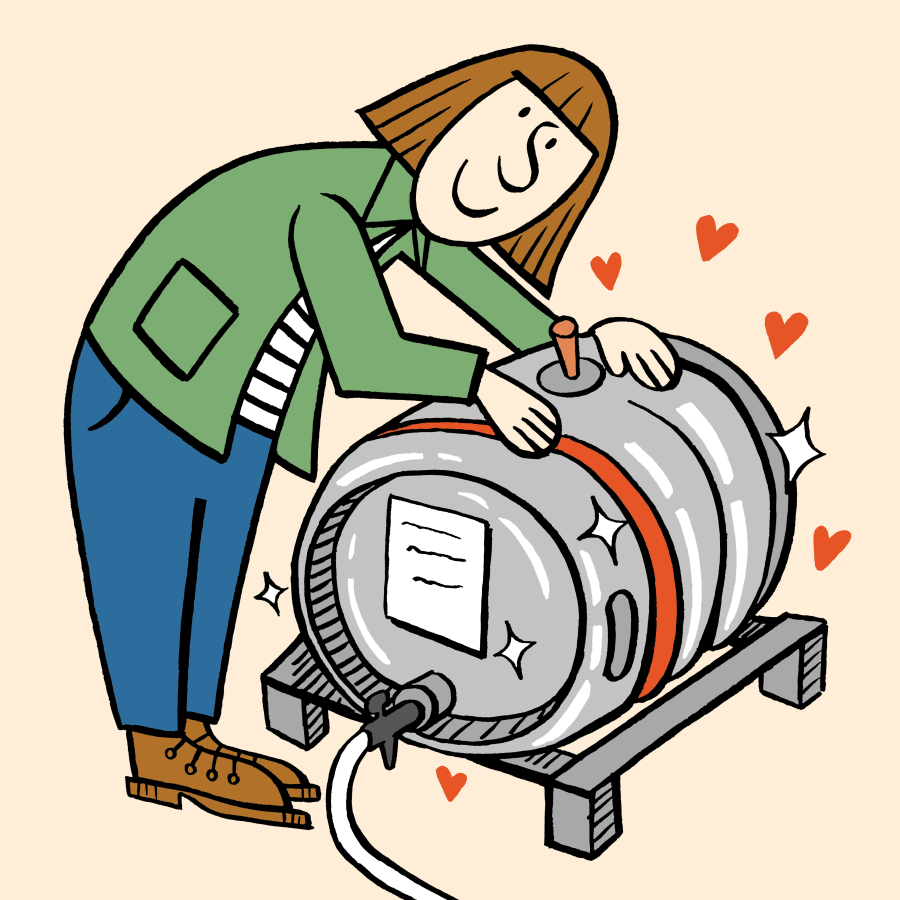
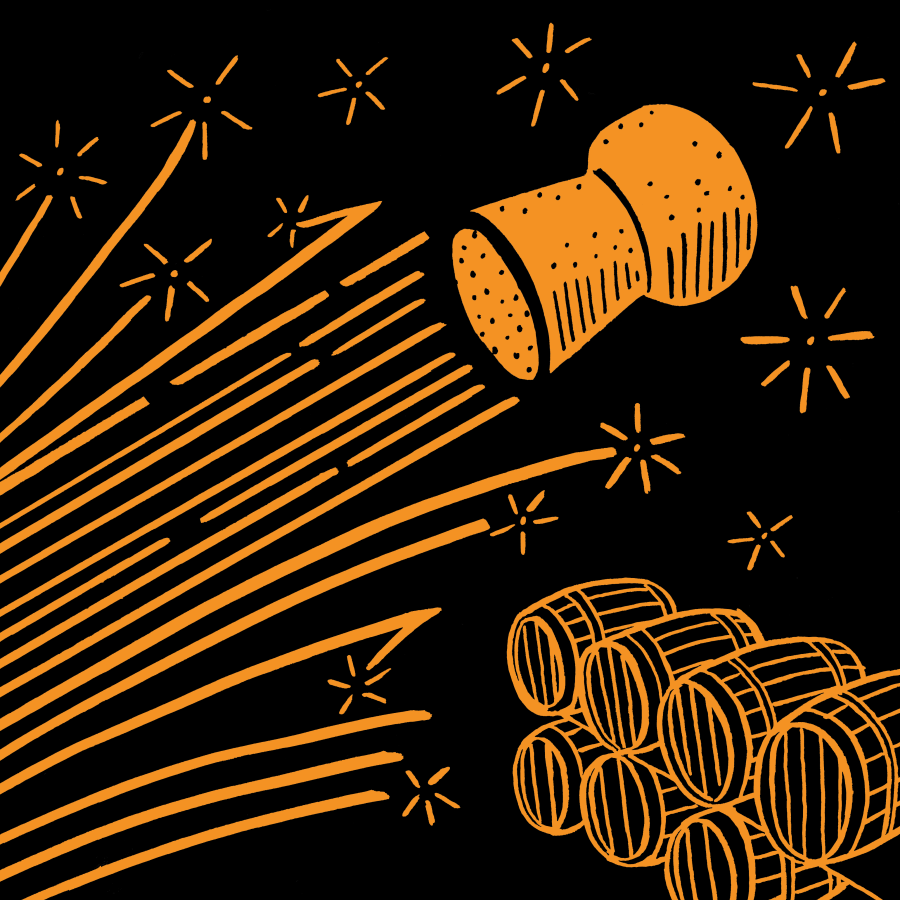
There are multiple ways to carbonate wine, but the two we’re going to focus on today are traditional method and ancestral method.
Traditional method, used for champagne, cava and cremant, requires two fermenations. Grape juice is fermented into a still, base wine and then this wine is bottled, with some additional yeast and sugar. This results in a secondary fermentation occurring inside the bottle and when complete, the dead yeast cells are removed from the bottle through a process called disgorging, leaving a clear, sparkling and sediment free wine with consistent carbonation.
Ancestral method, or pétillant-natural as it is often referred to, predates the traditional method. Only one fermentation occurs here and it all takes place inside the bottle. A wine is bottled before the fermentation has finished and sealed, resulting in trapped carbonation that leads to softer, larger bubbles. The remaining yeast dies within the bottle and this results in the formation of sediment and sometimes a hazier appearance to the wine.
Cask, to me, feels like a combination of these two methods. Live beer is required to undergo two fermentations but the beer is never disgorged, meaning sediment is produced and remains in the cask through the conditioning process. The process of dropping bright encourages the sediment to fall to the bottom leaving the beer clear, and this mirrors the act of standing a bottle of pét-nat wine upright for some time before serving, to allow the sediment to fall to the bottom of the bottle. Just like traditional method wine, the secondary fermentation of cask beer encourages extra character and depth of flavour that would be impossible to create using one fermentation alone.
When you start to look a little closer, the two styles of drink have more in common than one might think.

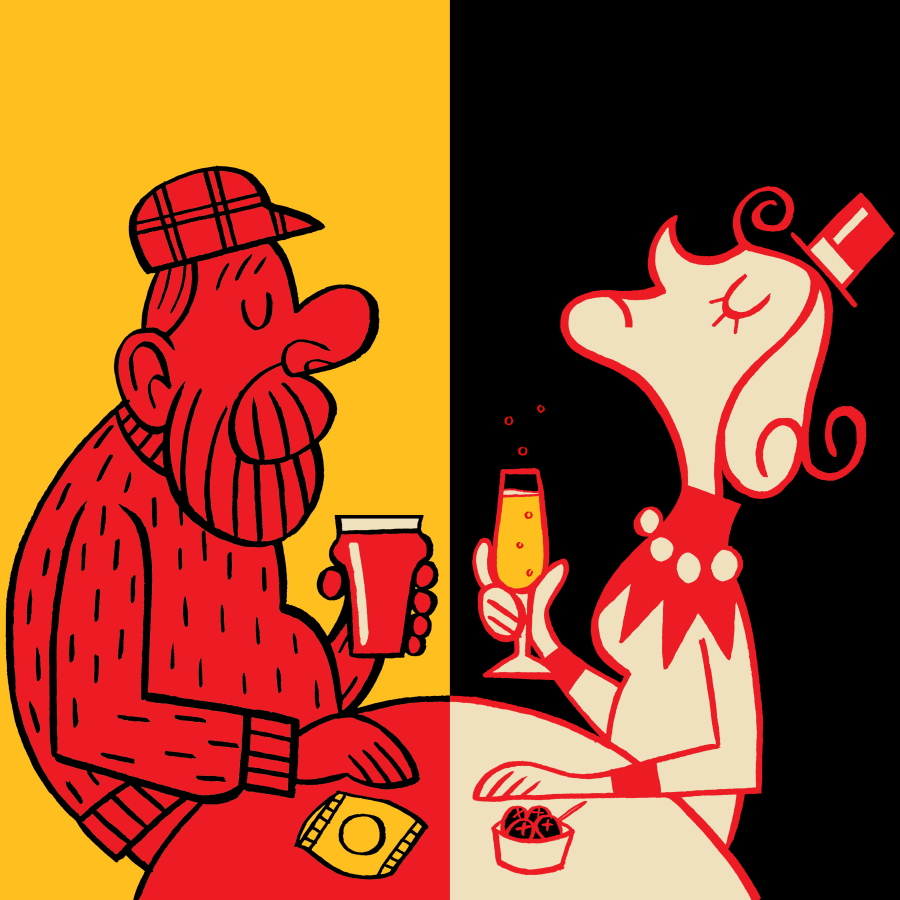
So if cask shares a lot of similarities with sparkling wine, why are they treated so differently? Why is it so rare that we find one served alongside the other?
Location is important here. Cask is a beer unique to British culture and heritage, there is nothing new or foreign about it, it is a beer style of Britain, made and drunk by those who live here. Cask’s presence in pubs means it has a strong relationship with working class culture and has a price point to match this, it is rare for a cask to be the most expensive option behind the bar.
Sparkling wine takes great influence and innovation from the cider makers of the UK, but it is still a drink very much attached to the Champagne region of France, with other sparkling wines following in champagne’s footsteps.
Through meticulous marketing techniques champagne gained a reputation as a drink of the higher classes and has to be imported into the UK, which makes it a much pricier option than drinks made locally. Symbols of status and success have been attached to sparkling wine as a result, used to signify taste and power in ways that cask does not.
It is rare then, for two drinks that have so much in common, that share methods of industrialisation and strong links to the place and heritage it comes from, to be seen together. Not many weddings toast to true love with a pint of cask beer and not many pubs serve multiple options of sparkling wine by the glass. But just because so much of society keeps cask and sparkling wine separate doesn’t mean they don’t have things to learn from one another.

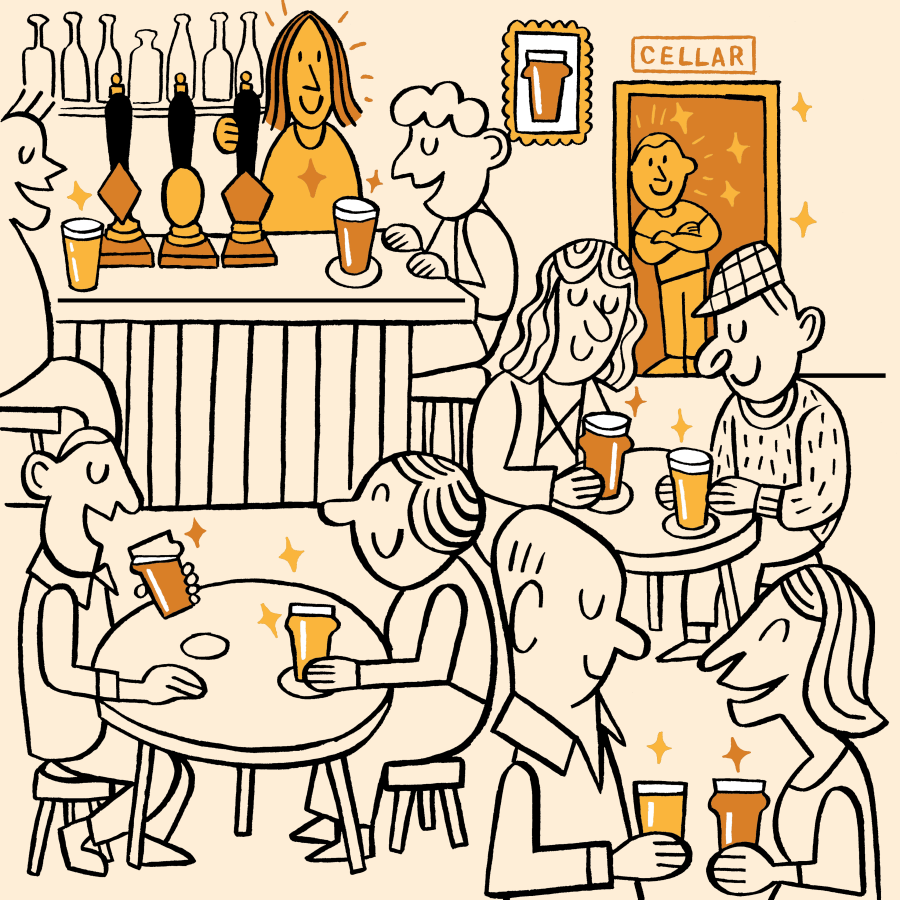
Is there anything to be learned from these differences?
It’s a complex question to ask of two very complex drinks. The industrialisation involved in brewing and sparkling wine and the importance they place on their local culture and heritage is immense and where most of their similarities lie, so it is perhaps in their difference in perceptions one may learn from the other.
Cask is a real ale, a live beer, that sells itself first and foremost as a drink for people to be consumed in the pub, for cask is nothing without the people that tend to the cellars of the establishments we drink in. There is so much magic around cask, the fleeting time period where a beer is at its best, the living breathing nature of its fermentation, the alchemy of a pub when it works in harmonious rhythm with the casks it serves, and yet this magic is rarely apparent in its marketing. Cask is special, it shimmers and sparkles just as much as champagne and relies on just as much skill of making and serving, if not more, yet it’s champagne that speaks to occasion on a global level, not cask. What would cask look like if it took a leaf out of sparkling wine’s book?
And what about the other way around? What could sparkling wine learn from cask? Something I love about cask is that there is as much importance placed on the people that serve the beer as is the people that make it, for you can brew the best beer in the world but it means very little if those handling it in the cellar treat it poorly. The onus of sparkling wine is always placed on the brand and the maker, very rarely the service staff who pour it, granted there is arguably less cellarmanship required, but what would hospitality look like if the wine servers were treated with as much reverence as the winemakers? What shifts in drinking out would take place if there was a greater understanding that a drink is only as good as the person who pours it for you? What more could we gain from our drinks when we start to connect them to one another, to listen to what they have to say?
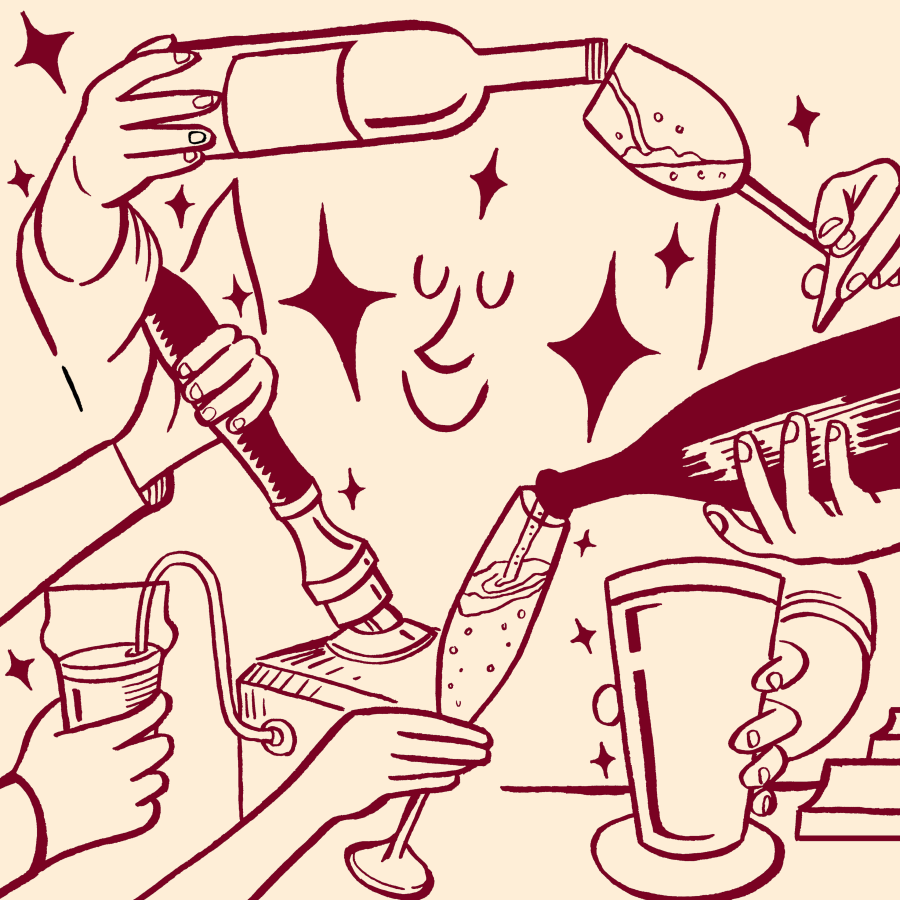
Become a CAMRA member today for unlimited free access plus many other membership benefits. Find out more